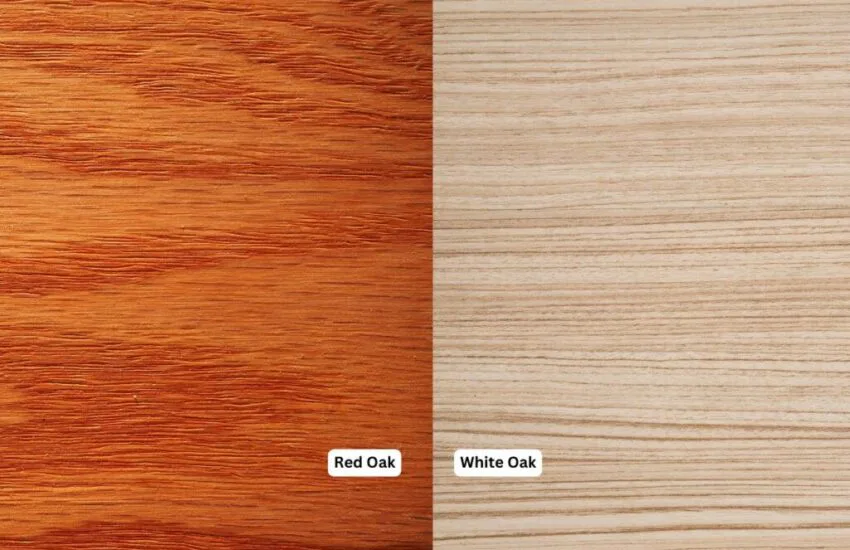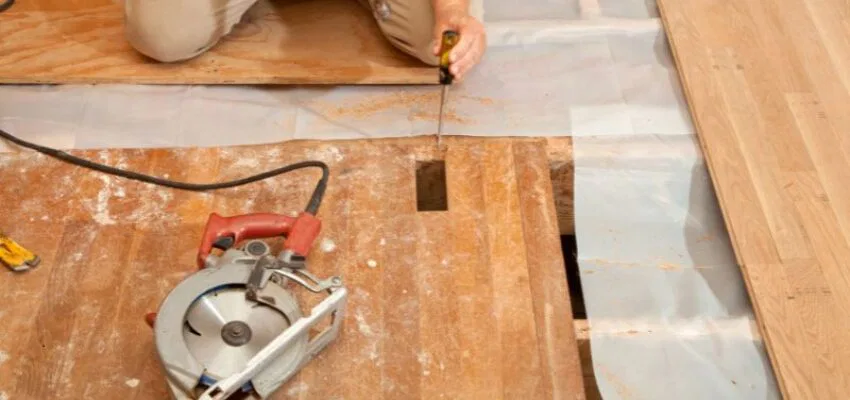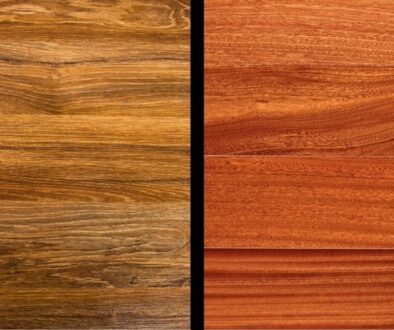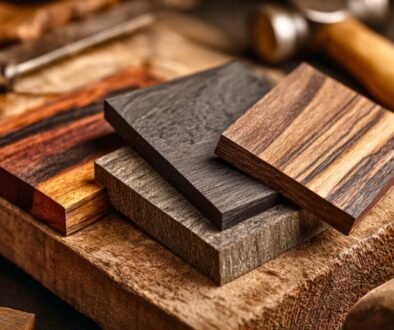Red Oak vs. White Oak Flooring: What’s the Difference?

Published October 7, 2024
Oak flooring has always been admired for its strength, timeless beauty, and capability to enhance a home’s aesthetic. Among the preferred options in oak flooring are red oak and white oak.
Each has its own set of attributes, and knowing these can help homeowners make informed decisions for their spaces.
Oak Flooring and Its Popularity
Oak flooring is a prominent feature in homes across the globe, celebrated for its robustness and classic look. It can complement a wide array of interior design styles, from conventional to contemporary.
Oak’s rich textures and colors blend seamlessly with various decor themes. Its ability to withstand wear makes it a popular choice for busy areas in homes.
Red Oak vs. White Oak: Key Differences
Color
The color is one of the most noticeable differences. Red oak usually presents a warmer, reddish tint that adds coziness. Meanwhile, white oak features a more neutral, golden hue, offering a subtle and adaptable backdrop for home decor.
Grain Pattern
Red oak shows a more pronounced, swirling grain pattern that can add a lively element to the flooring. In contrast, white oak possesses a tighter, straighter grain, providing a more even and sleek appearance. This difference can influence the room’s overall atmosphere.
Hardness
Red oak has a Janka hardness of 1,290, while white oak is a bit tougher, with a rating of 1,360. These ratings provide insight into the wood’s ability to withstand wear and tear. Although both types are durable, white oak is a bit harder, making it more resistant to dents and scratches. This quality might be preferable for homes with pets or heavy foot traffic.
Cost
Typically, red oak flooring costs between $3 and $8 per square foot. On the other hand, white oak flooring tends to cost between $5 and $10 per square foot. Red oak is generally more accessible and often cheaper than white oak, offering a budget-friendly option. However, prices can vary based on the quality and finish of the flooring.
Pros and Cons of Red Oak Flooring
Pros:
- Warm Tones: Red oak adds a cozy and inviting atmosphere to any room with its reddish hues, perfect for creating warmth.
- Pronounced Grain Pattern: Its distinct grain helps mask scratches and dents, maintaining a lively appearance even in high-traffic zones.
- Cost-Effectiveness: More affordable than many hardwood options, red oak provides a budget-friendly solution without sacrificing style or quality.
Cons:
- Limited Color Scheme Flexibility: Its reddish tint might restrict future decor changes, as it may not blend well with all color palettes.
Pros and Cons of White Oak Flooring
Pros:
- Neutral Coloration: The subtle golden tones of white oak offer a versatile backdrop suitable for a range of interior designs, from modern to classic.
- Durability: Known for its hardness, white oak resists dents and scratches, making it a strong choice for busy households or high-traffic areas.
- Sleek Appearance: With a tighter grain, white oak provides a refined and uniform look that complements contemporary or minimalist spaces.
Cons:
- Cooler Tones: The cooler shades might not suit those wanting a warmer, more traditional feel.
- Potential for Showing Wear: The refined grain pattern may show signs of wear over time, particularly in areas with frequent use.
Tips for Choosing Between Red Oak and White Oak
Tip #1: Consider Your Home’s Decor and Personal Style
Red Oak
If your home features warm colors and a traditional style, red oak is a great choice. Its reddish tones add warmth and complement classic decor elements, creating a cozy and inviting atmosphere.
White Oak
For those with a modern or minimalist design preference, white oak is ideal. Its neutral, golden hues and sleek grain pattern provide a clean, sophisticated look that aligns well with contemporary interiors.
Tip #2: Think About the Room’s Function and Traffic Level
White Oak
Known for its hardness, white oak is perfect for high-traffic areas or rooms that endure a lot of activity. Its durability helps it withstand dents and scratches, making it a practical option for families with pets or children.
Red Oak
If you are working within a budget, red oak offers an affordable solution. While slightly less hard than white oak, it still provides good durability and is a cost-effective option for projects where budget is a key consideration.

Explore US Vintage Wood
If you’re considering oak wood for your home, US Vintage Wood is a fantastic choice. We specialize in reclaimed and specialty wood, offering both reclaimed and fresh white oak. Our team is skilled and crafts each piece with care, adding character to your home.
Wrapping It Up
Both red oak and white oak flooring bring distinct benefits that can enhance the beauty and functionality of your home. By understanding the differences in color, grain pattern, hardness, and cost, you can make an informed decision that suits your needs.
Whether you lean toward the warm tones of red oak or the understated charm of white oak, oak flooring is ready to impart a lasting elegance to your space. By aligning your choice with your personal style and practical needs, you can select a flooring solution that will be appreciated for years to come.
Hire The Timber Experts For Your Next Project
Vintage & Specialty Wood should be your source of the highest quality timbers from around the world. When it comes to fabricating and installing reclaimed wood or specialty wood products in your home, we don’t cut corners. We offer many reclaimed wood and specialty wood products such as Douglas Fir, white oak, and much more. We also offer timber framing and wood flooring services as well. Contact our team today to speak to a timber expert about what Vintage & Specialty Wood can do for you.

This Blog Is Fact Checked
This content has undergone meticulous fact-checking by our team of internal experts. Gain a deeper understanding of the high editorial standards we uphold on our website here.

About The Author
Experience, exploration, and knowledge are the hallmarks of writer Rei Bayucca. Her dedication to crafting articles that both inspire and educate will leave you thinking long after you’ve finished reading.




